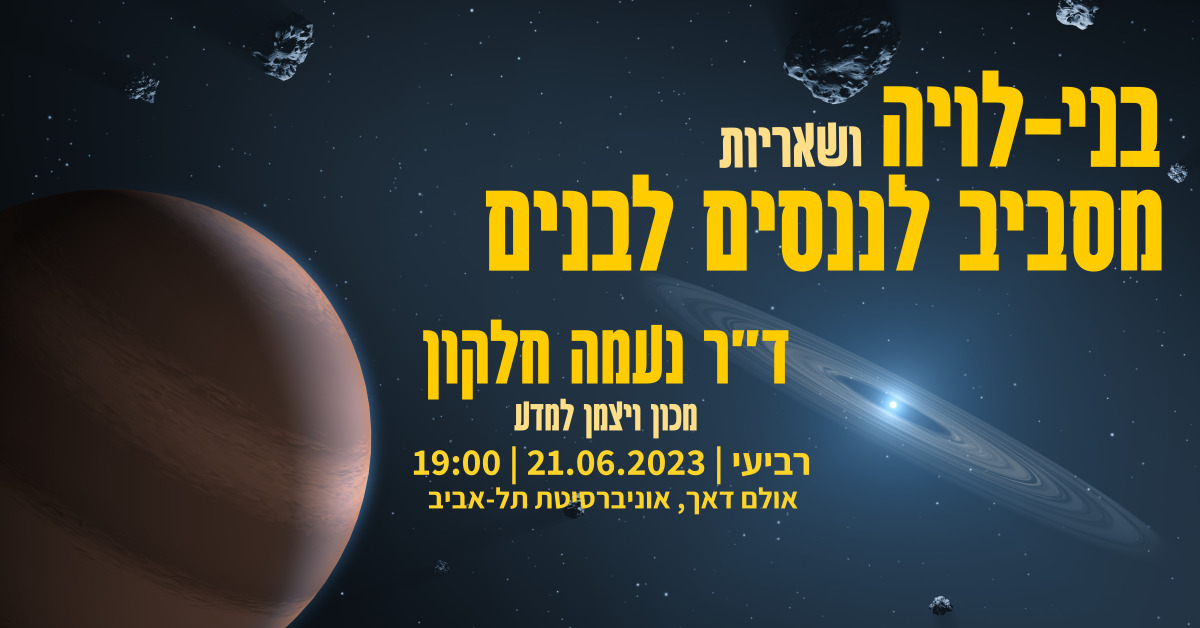Wed 21 June 2023 | 7:00 pm - 11:00 pm
- , ,

Over 97% of all stars, including our Sun, will end their lives as white dwarfs: small, compact stars that cool slowly over billions of years. Since most Sun-like stars have planets orbiting them, observations of white dwarfs can teach us about the fate of planetary systems. Until recently, the search for planets outside the solar system focused on sun-like stars. In recent years, observations of white dwarfs have revealed evidence of remnants and remains from ancient planetary systems, and even a Jupiter-like planet in orbit close to the white dwarf. Planets orbiting close to a white dwarf can remain in the “habitat zone”, where the temperature is suitable for the existence of liquid water, for billions of years – enough time for life to develop. A planet orbiting the white dwarf in an orbit that intersects our line of sight to the star will obscure the dwarf as it passes by, similar to what happens in a solar eclipse. Since a white dwarf is similar in size to the Earth, a terrestrial planet can cause a significant decrease in the amount of light reaching us from the dwarf as it passes over the star. The significant change in the dwarf’s light during the transit could allow a clearer measurement of the atmospheric composition of the planet, which may lead to the first discovery of substances whose presence indicates the existence of life, such as molecular oxygen, outside the solar system.
Paired systems of stars that include two white dwarfs are important to a wide range of astrophysical questions, from stellar evolution to the creation of gravitational waves. One of the questions deals with the causes of the explosion of white dwarfs in supernova type Ia, which is an important source of the heavy elements in the periodic table, and is even used by us to measure distances in the universe. According to one of the leading scenarios, such a supernova occurs when two white dwarfs merge with each other.
The study of white dwarfs and their immediate environment is therefore important for solving several open questions. Observations of white dwarfs can reveal the presence of Bnei Levia like other white dwarfs, remnants of ancient solar systems, and even planets where life may be possible. In the lecture we will see what can be learned from observations of white dwarfs, and how it can be done.
למעלה מ-97% מכל הכוכבים, כולל השמש שלנו, יסיימו את חייהם כננסים לבנים: כוכבים קטנים ודחוסים, המתקררים באטיות במשך מיליארדי שנים. מאחר שלרוב הכוכבים דמויי-השמש יש כוכבי-לכת המקיפים אותם, תצפיות בננסים לבנים יכולות ללמד אותנו על גורלן של מערכות פלנטריות. עד לאחרונה התמקד החיפוש של כוכבי-לכת מחוץ למערכת השמש בכוכבים דמויי-שמש. בשנים האחרונות גילו תצפיות בננסים לבנים עדויות לשאריות ושרידים ממערכות פלנטריות קדומות, ואף כוכב-לכת דמוי-צדק במסלול קרוב לננס הלבן. כוכבי-לכת הנמצאים במסלול קרוב לננס לבן יכולים להישאר ב”אזור הישיב”, בו הטמפרטורה מתאימה לקיום מים נוזליים, במשך מיליארדי שנים – זמן מספיק להתפתחות חיים. כוכב-לכת המקיף את הננס הלבן במסלול החותך את קו הראיה שלנו אל הכוכב, יסתיר את הננס בעת שיחלוף על פניו, בדומה למתרחש בליקוי חמה. מאחר שננס לבן דומה בגודלו לכדור-הארץ, כוכב-לכת ארצי יכול לגרום לירידה משמעותית בכמות האור המגיעה אלינו מהננס בעת מעברו על-פני הכוכב. השינוי המשמעותי באור הננס בעת המעבר, יכול לאפשר מדידה ברורה יותר של ההרכב האטמוספרי של כוכב-הלכת, מה שעשוי להוביל לגילוי הראשון של חומרים שנוכחתם מעידה על קיום חיים, כמו חמצן מולקולרי, מחוץ למערכת השמש.
למערכות זוגיות של כוכבים הכוללות שני ננסים לבנים חשיבות למגוון רחב של שאלות אסטרופיזיקליות, מהתפתחות כוכבים ועד ליצירת גלי כבידה. אחת מהשאלות עוסקת בגורמים להתפוצצות של ננסים לבנים בסופרנובה מסוג Ia, שהיא מקור חשוב ליסודות הכבדים בטבלה המחזורית, ואף משמשת אותנו למדידת מרחקים ביקום. לפי אחד התרחישים המובילים, סופרנובה כזאת מתרחשת כאשר שני ננסים לבנים מתמזגים אחד עם השני.
חקר ננסים לבנים וסביבתם הקרובה חשוב, אם כן, לפתרון מספר שאלות פתוחות. תצפיות בננסים לבנים יכולות לגלות נוכחות של בני-לויה כמו ננסים לבנים אחרים, שאריות ממערכות שמש קדומות, ואף כוכבי-לכת בהם יתכנו חיים. בהרצאה נראה מה ניתן ללמוד מתצפיות בננסים לבנים, וכיצד ניתן לעשות זאת.
Check Out The Event Page On Facebook



